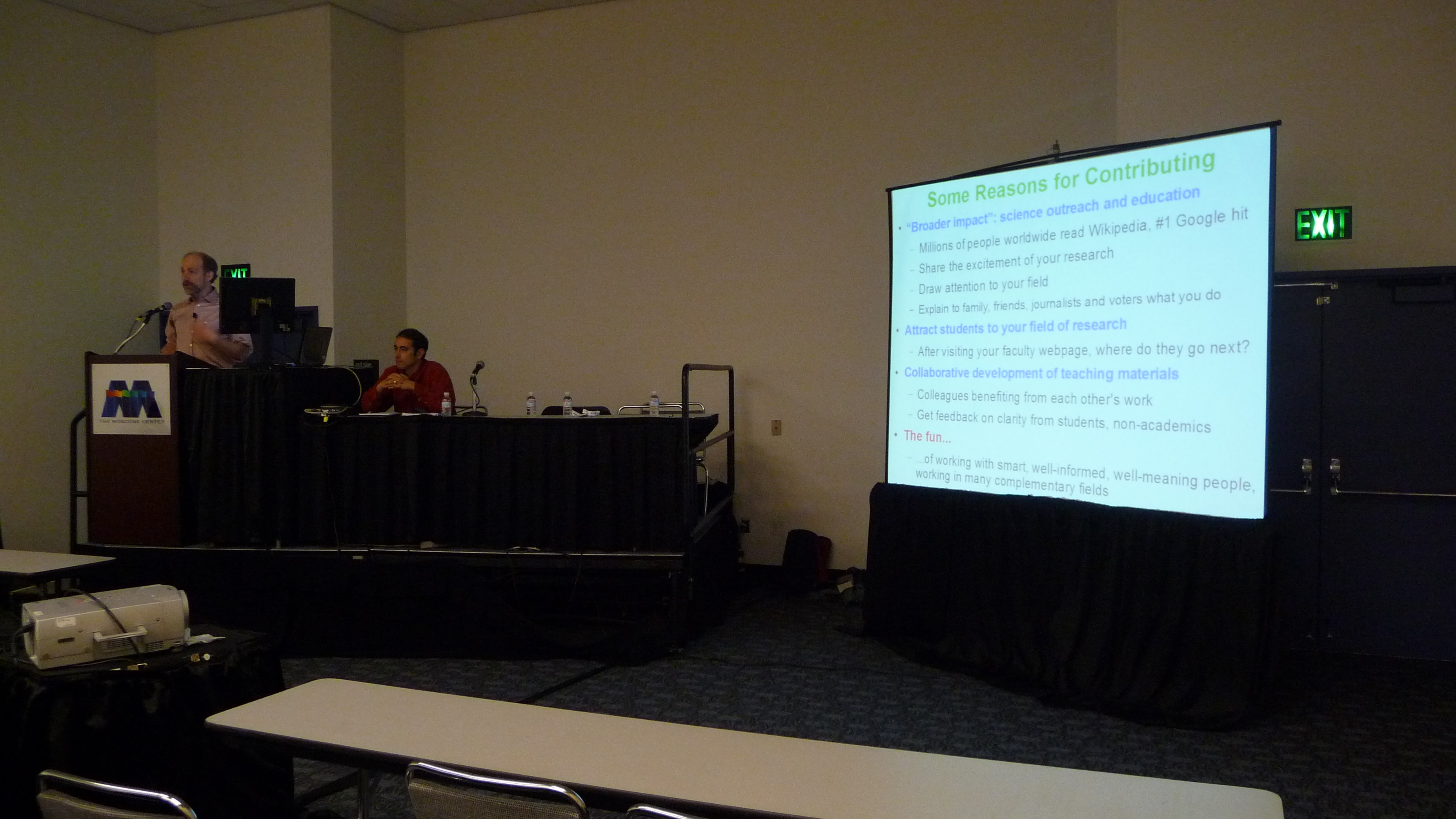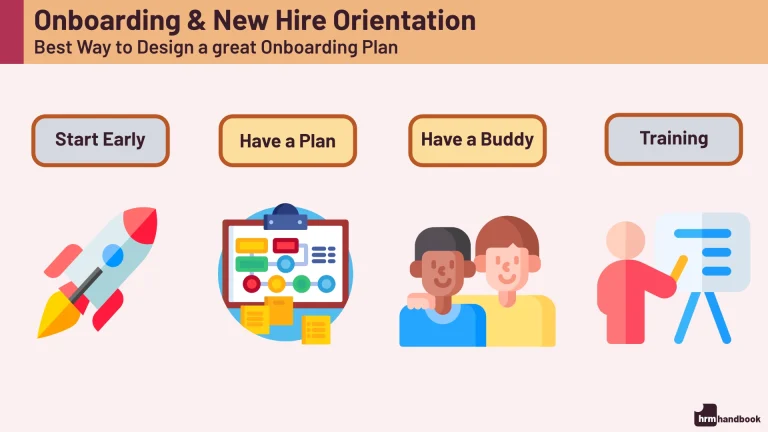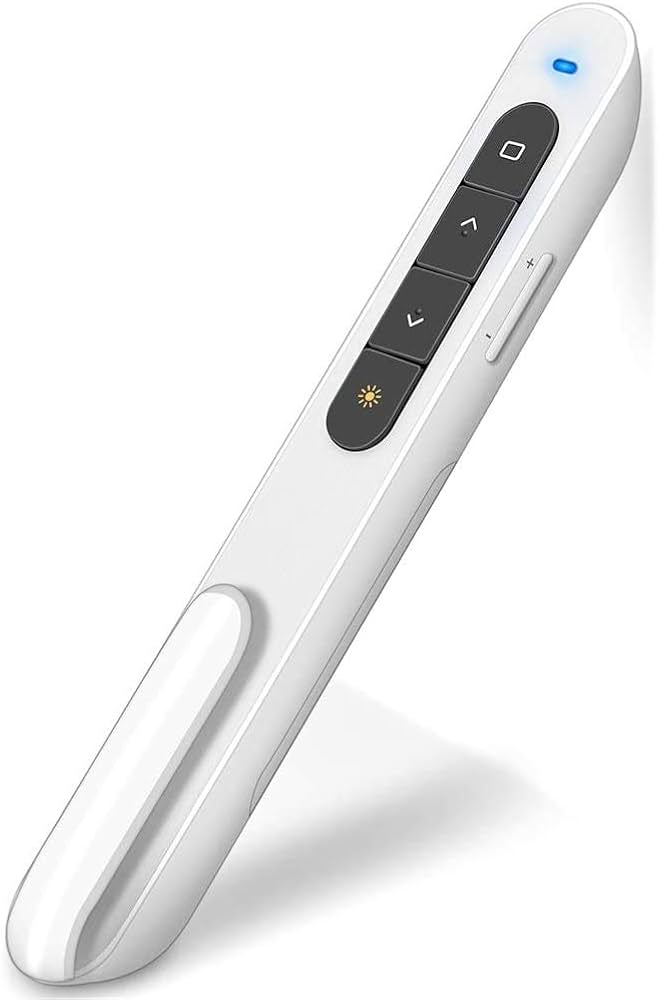How to Do a Workshop Presentation?
To do a workshop presentation, start by planning your time and understanding your audience. Create your content early, incorporate relevant examples and technology, and build connections with your participants.
Follow a structured workshop format, including setting the tone, delivering what they came for, and engaging participants with exercises and demonstrations. Finally, conclude with a closure exercise and ensure a smooth transition to wrap up the workshop. By following these steps, you can deliver an effective and engaging workshop presentation.
Remember to consider the big picture, determine your goals, choose a suitable format, build a team, research your audience, outline the budget, and create a detailed agenda. Learning from competition and seeking inspiration from successful workshops can also help you improve your presentation.
Understanding Your Audience
Understand your audience by conducting thorough research before doing a workshop presentation. Learn about their interests, needs, and preferences to tailor your content and engage them effectively. Additionally, gather feedback during and after the presentation to continuously improve your workshop delivery.
Research Your Target Audience:
- Conduct thorough research to understand your target audience.
- Identify their demographics, interests, and needs.
- Use tools like surveys, interviews, and social media analytics to gather relevant data.
- Gain insights into their preferences, challenges, and motivations.
Identify Their Needs And Interests:
- Determine what your audience wants to learn or achieve from the workshop.
- Identify their pain points and challenges that you can address.
- Consider their level of knowledge and expertise in the topic.
- Understand their interests and align your content accordingly.
Tailor Your Content To Their Specific Preferences:
- Customize your workshop content to match the preferences of your audience.
- Use language, examples, and references that resonate with them.
- Incorporate relevant visuals and multimedia elements to enhance engagement.
- Choose a format that suits their learning style, whether it’s interactive activities, group discussions, or individual exercises.
By understanding your audience, you can create a workshop presentation that caters to their specific needs and interests. This will ensure that your content resonates with them, keeps them engaged, and ultimately delivers value. So, invest time in researching your audience, identifying their needs, and tailoring your content accordingly.
Crafting A Compelling Workshop Outline
Crafting a compelling workshop outline is essential when it comes to delivering a successful workshop presentation. By carefully planning and organizing your content, setting goals, understanding your audience, and incorporating interactive exercises, you can create an engaging and impactful workshop experience.
Crafting a well-structured workshop outline is crucial for delivering an engaging and impactful presentation. A clear outline helps you define the objectives and goals of your workshop, organize your content effectively, and incorporate interactive elements to keep participants engaged. Here are some key tips to consider when crafting your workshop outline:
Define Clear Objectives And Goals For Your Workshop:
- Clearly define the main objectives and goals you want to achieve with your workshop.
- Consider what you want participants to learn, achieve, or take away from the workshop.
- Tailor your objectives to meet the needs and expectations of your target audience.
- Keep your objectives concise, focused, and measurable to ensure clarity and effectiveness.
Organize Your Content To Ensure A Logical Flow:
- Start with an attention-grabbing introduction that sets the stage for your workshop.
- Break down your content into logical sections or topics that build upon one another.
- Use headings and subheadings to clearly indicate the structure and flow of your workshop.
- Provide smooth transitions between different sections to maintain a cohesive narrative.
- End with a summary or conclusion that reinforces the main points covered during the workshop.
Incorporate Interactive Elements To Engage Participants:
- Include interactive activities, exercises, or discussions throughout the workshop to promote active participation.
- Use visual aids, such as slides or props, to enhance understanding and engagement.
- Encourage group interactions and collaboration to foster a sense of community and shared learning.
- Incorporate hands-on exercises or real-life examples to make the content more relatable and practical.
- Emphasize participant feedback and Q&A sessions to address individual needs and enhance engagement.
Remember, a compelling workshop outline should be aligned with your objectives, well-organized, and designed to actively involve participants. By following these tips, you can create a workshop presentation that is informative, engaging, and impactful.
Designing Effective Visuals And Slides
Learn how to design effective visuals and slides for your workshop presentation with these helpful tips and techniques. From planning your content early to incorporating relevant examples, this guide will help you create engaging and impactful visuals that will captivate your audience.
Utilize Eye-Catching Visuals To Enhance Your Presentation:
- Incorporate relevant images and graphics that support your content and engage your audience.
- Use high-quality photographs or illustrations that are visually appealing and easy to understand.
- Avoid cluttering your slides with too many visuals, as it can distract from your message.
- Use charts, graphs, or infographics to present data or complex information in a visually appealing way.
- Experiment with animations or transitions to add visual interest and highlight important points.
Choose A Cohesive Color Scheme And Font Style:
- Select a color scheme that complements your topic and evokes the desired emotions or atmosphere.
- Use colors consistently throughout your presentation to create a cohesive and professional look.
- Consider the legibility of your text by choosing a font style that is clear and easy to read.
- Stick to one or two font styles to maintain consistency and avoid visual clutter.
- Pay attention to font sizes to ensure that your text is easily readable from a distance.
Use Bullet Points And Concise Text To Keep Slides Clean And Readable:
- Break down your content into bullet points to make it easier for your audience to follow along.
- Keep each bullet point concise and to the point, using only essential information.
- Avoid long paragraphs or excessive text, as it can overwhelm your audience and make your slides difficult to read.
- Use short phrases or keywords instead of complete sentences.
- Use consistent formatting for bullet points, such as indentation or symbol style, to maintain a clean and organized appearance.
Remember to incorporate these design practices in your workshop presentation to effectively communicate your message and engage your audience. By utilizing eye-catching visuals, selecting a cohesive color scheme and font style, and using bullet points and concise text, your slides will be visually appealing, easy to understand, and memorable.
Engaging Participants With Activities
Engage participants in workshop presentations by incorporating interactive activities that cater to different learning styles. Plan the workshop carefully, understand the audience, create relevant content, utilize technology, and provide examples to build connections and make the presentation unique.
Incorporate Interactive Activities To Encourage Participation:
- Use icebreaker activities at the beginning of the workshop to help participants get to know each other and feel more comfortable.
- Incorporate group exercises where participants work together to solve a problem or complete a task.
- Use technology tools, such as online polls or interactive whiteboards, to engage participants and gather their input.
- Encourage active participation by asking open-ended questions and allowing ample time for discussion and sharing of ideas.
- Incorporate games or quizzes related to the workshop topic to make the learning experience more enjoyable and interactive.
Foster Group Discussions And Brainstorming Sessions:
- Divide participants into small groups and assign specific topics or questions for them to discuss and brainstorm.
- Provide clear guidelines and time limits for group discussions to keep the session focused and productive.
- Encourage participants to actively listen to each other and build on each other’s ideas during group discussions.
- Facilitate brainstorming sessions by using techniques like mind mapping or sticky note exercises to generate and organize ideas.
- Create a safe and supportive environment where participants feel comfortable expressing their opinions and sharing their thoughts.
Include Hands-On Exercises And Role-Playing Scenarios:
- Design hands-on exercises that allow participants to apply the concepts and skills they are learning in real-world scenarios.
- Use role-playing scenarios to simulate challenging situations that participants may encounter in their professional or personal lives.
- Provide clear instructions and guidance for hands-on exercises and role-playing scenarios to ensure participants understand the objectives and expected outcomes.
- Provide feedback and facilitate discussions after hands-on exercises and role-playing scenarios to deepen participants’ understanding and learning.
- Incorporate reflection exercises where participants can reflect on their experiences and identify key takeaways from the hands-on activities.
Remember, incorporating interactive activities, fostering group discussions, and including hands-on exercises and role-playing scenarios are all effective ways to engage participants and make your workshop presentation more impactful and memorable. By creating an interactive and participatory learning environment, you can ensure that your participants are actively involved and derive maximum benefit from the workshop.
Delivering A Confident And Impactful Presentation
In this workshop presentation, you will learn effective techniques to deliver a confident and impactful presentation. Discover tips and tricks on planning time, understanding your audience, creating relevant content, utilizing technology, and building connections to engage your audience and leave a lasting impression.
Practice Your Presentation To Improve Delivery And Timing:
- Practice your presentation multiple times to become familiar with the content and flow.
- Rehearse in front of a mirror or record yourself to observe your body language and facial expressions.
- Time your presentation to ensure it fits within the allocated timeframe.
- Take note of any areas that need improvement and make necessary adjustments.
Use Confident Body Language And Maintain Eye Contact:
- Stand straight with your shoulders back to project confidence.
- Use hand gestures and facial expressions to enhance your message.
- Maintain eye contact with your audience to establish connection and engagement.
- Avoid crossing your arms or fidgeting, as it can convey nervousness.
Speak Clearly And Vary Your Vocal Tone And Pace:
- Enunciate your words clearly to ensure everyone can understand you.
- Project your voice to reach the entire audience, especially in large rooms.
- Vary your vocal tone to emphasize important points and maintain interest.
- Control your pace by speaking slowly for emphasis and speeding up for excitement.
Remember, delivering a confident and impactful presentation requires practice, self-awareness, and effective communication techniques. By implementing these strategies, you can engage your audience, leave a lasting impression, and successfully convey your message.

Credit: commons.wikimedia.org
Handling Questions And Managing Time
Discover effective strategies for handling questions and managing time during a workshop presentation. Learn how to engage different types of learners, appeal to your audience, and make your presentation unique to create a successful workshop experience.
Preparing for potential questions and managing your time effectively are crucial aspects of conducting a successful workshop presentation. By being prepared and creating a supportive environment for questions and discussions, you can ensure that your workshop runs smoothly and meets its objectives.
Here are some tips to help you handle questions and manage time efficiently:
- Prepare for potential questions and have relevant answers ready: Anticipate the questions that participants might have and prepare concise and relevant answers in advance. This will demonstrate your expertise and help you address any concerns or uncertainties that may arise. Be sure to research the topic thoroughly and gather additional resources or references to support your answers.
- Set time limits for each section to ensure you cover all key points: Allocate specific time slots for each section of your workshop to ensure that you cover all the key points within the given timeframe. This will help you maintain a structured flow throughout the presentation and prevent any sections from running over time. Consider using a timer or setting alerts to keep yourself on track.
- Foster an open and inclusive environment for questions and discussions: Encourage participants to ask questions and engage in discussions by creating a safe and supportive atmosphere. Emphasize that there are no wrong questions and that everyone’s input is valuable. Be an active listener and provide thoughtful responses that encourage further dialogue. This will enrich the learning experience and allow participants to clarify any doubts or seek additional information.
- Moderate questions to maintain focus and manage time: While it’s important to address participants’ questions, it’s equally crucial to manage time effectively. Moderate the questions by summarizing and paraphrasing them to ensure clarity and maintain focus. If a question requires a detailed explanation, offer to discuss it further after the presentation or provide additional resources for participants to explore independently.
- Allocate sufficient time for Q&A sessions: Dedicate specific time slots within your workshop for Q&A sessions. This will give participants the opportunity to ask questions related to the content covered so far and seek clarification on any concepts discussed. Set reasonable time limits for each question to ensure that you can accommodate as many queries as possible within the allocated timeframe.
- Wrap up the Q&A session effectively: Signal the end of the Q&A session by summarizing the key takeaways and providing any additional resources or references for further exploration. Express gratitude for the participants’ engagement and reaffirm your willingness to address any remaining questions outside the workshop setting.
By preparing for potential questions, managing time effectively, and fostering an open environment for questions and discussions, you can ensure a successful workshop presentation that meets the needs of your participants while maintaining a structured and engaging flow.
Providing Resources And Follow-Up
When it comes to doing a workshop presentation, providing resources and follow-up is crucial. By offering participants valuable materials and continued support after the workshop, you ensure they have the necessary tools and guidance to apply what they’ve learned effectively.
Share Additional Resources And References For Further Learning:
- Provide a list of books, articles, or online resources that participants can explore to delve deeper into the topic discussed during the workshop.
- Include links to relevant websites or blogs that offer additional information or practical tools related to the workshop content.
- Offer suggestions for relevant podcasts, TED talks, or YouTube videos that expand on the workshop subject matter.
- Mention any upcoming events, webinars, or conferences that participants might find valuable for further learning in the field.
- Encourage participants to join relevant online communities or forums where they can continue the discussion and exchange ideas with like-minded individuals.
Collect Participant Feedback To Improve Future Workshops:
- Create a feedback form or survey for participants to provide their thoughts on the workshop content, structure, and delivery.
- Include specific questions to gather feedback on the effectiveness of different activities, presentations, or discussions during the workshop.
- Ask participants to rate their overall satisfaction and to provide suggestions for improvement.
- Offer opportunities for anonymous feedback to encourage honest and valuable responses.
- Consider using a digital platform or tool to streamline the feedback collection process and analyze the data more efficiently.
Follow Up With Participants To Maintain Engagement:
- Send a personalized email to each participant, expressing appreciation for their attendance and participation in the workshop.
- Share any additional resources, handouts, or materials that were discussed or promised during the workshop.
- Provide a summary of key takeaways from the workshop to reinforce the learning and encourage further reflection.
- Invite participants to join a follow-up webinar or online session to address any remaining questions or provide additional information related to the workshop topic.
- Offer ongoing support through email newsletters, blog updates, or exclusive access to a private online community for workshop participants.
Remember, providing resources and follow-up after a workshop is crucial to enhance the participants’ learning experience and maintain their engagement in the topic. By sharing additional resources, collecting feedback, and following up with participants, you can ensure a valuable and impactful workshop that leaves a lasting impression.
Frequently Asked Questions On How To Do A Workshop Presentation
How Do You Structure A Workshop?
To structure a workshop effectively, follow these steps: 1. Identify the purpose and goals of the workshop. Answer the 5 Ws (Who, What, When, Where, Why), and How. 2. Choose a suitable workshop format, such as lectures, discussions, demonstrations, simulations, games, or exercises.
Consider combining different formats to create a dynamic experience. 3. Build a knowledgeable and skilled team to facilitate the workshop. Ensure that the team understands the goals and objectives. 4. Research your target audience to understand their needs, interests, and preferences.
Tailor the workshop content and activities accordingly. 5. Create a budget outline to determine the necessary resources and expenses for the workshop. 6. Develop a detailed agenda that includes the topics, activities, and timings. Make sure to leave room for breaks and participant engagement.
7. Learn from competition and best practices in your field to enhance the workshop’s effectiveness and uniqueness. By following these steps, you can structure a successful workshop that meets the needs of your audience and achieves your desired outcomes.
What Is A Workshop Format?
A workshop format refers to the structure or arrangement of a workshop. It can involve various formats like lectures, discussions, demonstrations, simulations, games, or exercises. The goal of a workshop format is to engage participants actively and facilitate effective learning and collaboration.
By choosing the right format, workshop organizers can create a dynamic and diverse experience for attendees. They can also combine different formats or use hybrid models to cater to the specific needs and objectives of the workshop. The selection of a suitable topic and format for a workshop is essential in ensuring its success and maximizing the participants’ learning outcomes.
How Do I Start A Workshop Session?
To start a workshop session, follow these steps: 1. Plan your workshop carefully, considering the goals and outcomes you want to achieve. 2. Understand your audience and tailor your content to their needs and interests. 3. Create your workshop content well in advance and make sure to include relevant examples and activities.
4. Use technology effectively, such as slideshows or interactive tools, to enhance engagement. 5. Set the tone of the workshop by creating a welcoming and inclusive environment. 6. Give participants what they came for by delivering the promised content and addressing any questions or concerns.
7. Incorporate exercises and demonstrations to promote active learning and participant involvement. 8. Conclude the workshop with a closure exercise to summarize key takeaways and allow participants to reflect on what they have learned. Remember to be well-prepared, engaging, and responsive to participant needs throughout the workshop session.
What Are The Steps In The Workshop Process?
The workshop process involves the following steps: 1. Plan and allocate time. 2. Understand your audience and their needs. 3. Create content in advance. 4. Prepare relevant examples and use technology if necessary. 5. Determine your desired outcomes for the workshop.
6. Set the tone and create a welcoming environment. 7. Deliver exercises and demonstrations to engage participants. 8. Close the workshop with a relevant exercise to reinforce key concepts. 9. Follow-up and provide resources or materials to participants. By following these steps, you can effectively plan and execute a successful workshop that meets the needs and expectations of your audience.
Conclusion
To wrap up, mastering the art of workshop presentations is crucial for anyone hoping to engage and educate their audience effectively. By following the steps outlined in this blog post, you can ensure that your workshops are well-organized, informative, and interactive.
Start by thoroughly researching your audience and determining your goals. From there, choose the appropriate format and create an agenda that guides the flow of your presentation. Don’t forget to incorporate relevant examples, utilize technology, and build connections with your attendees.
Additionally, be sure to set the right tone, deliver what your audience came for, and provide engaging exercises and demonstrations. Finally, end your workshop on a high note with a closure exercise that effectively summarizes the key takeaways. With these strategies in mind, you’ll be well-equipped to deliver impactful workshop presentations that leave a lasting impression on your audience.
Start implementing these techniques today and watch your presentation skills soar to new heights.



